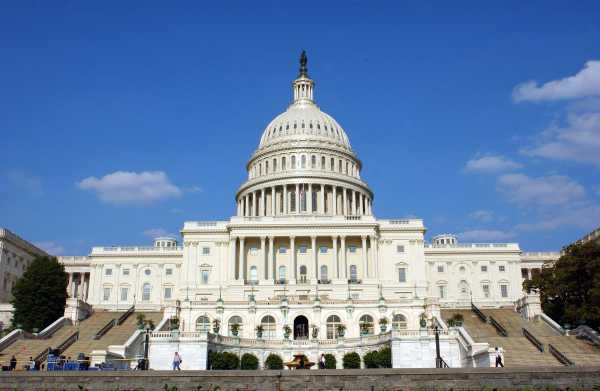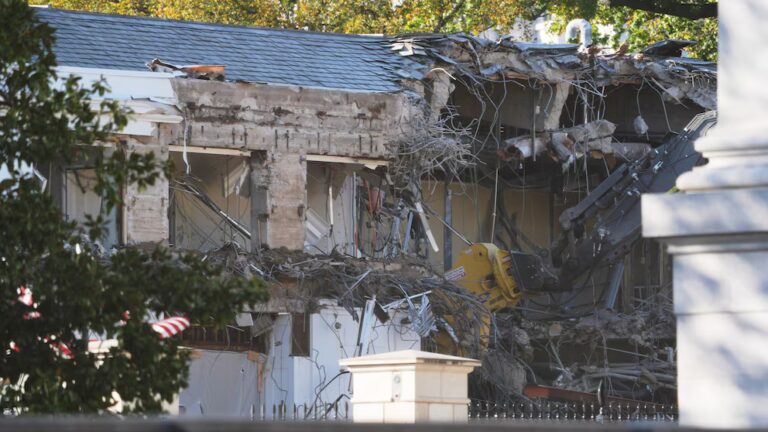
The Senate is advancing a legislative package to confront an opioid epidemic that’s killed hundreds of thousands over the past two decades. But as much as the Senate has hyped up the proposal, experts and advocates on the ground are worried that the bill simply doesn’t match the full scale of the crisis.
The bipartisan Senate health committee on Tuesday unanimously approved the Opioid Crisis Response Act of 2018. The measure, which will need approval from the full Congress and president to become law, was put together over six months of hearings — merging a hodgepodge of lawmakers’ proposals for dealing with the opioid crisis.
Part of the bill, for example, restructures grants that help states boost addiction treatment to better target harder-hit regions. Others remove barriers to researching non-addictive medications for addiction and pain (to provide an alternative to opioids). Some encourage new packaging for longer opioid painkiller prescriptions and better use of prescription drug monitoring programs. (You can read a more in-depth summary of the bill here.)
It’s not that any of these ideas are bad. In general, the measures, many of which have also been discussed in the House, have drawn wide praise for focusing largely on public health measures — a sharp contrast to President Donald Trump’s plan for the opioid crisis, which called for tougher criminal justice measures and more use of the death penalty. Many of the ideas in the bills really would be a step up from the current situation, according to experts.
But over the past few months, as these measures have moved forward in the House and Senate, experts have repeatedly cautioned that they simply don’t go far enough.
“Many of these policies seem to be tinkering around the edges,” Dr. Leana Wen, the health commissioner of Baltimore, previously told me. “It’s not that they’re not helpful in some way,” she added. But what officials on the ground feel they need is “sustained, specific funding” and bolder, more sweeping guidance that will help build up long-term solutions.
In fact, the bill would not provide a significant increase in spending on the opioid crisis at all — instead leaving the funding work to later appropriations processes in Congress.
That fails to address one of the most prominent concerns in the opioid crisis. According to the surgeon general’s 2016 addiction report, only 10 percent of people with a substance use disorder get specialty treatment — which the report attributed in part to poor access to care. Experts say addressing that will require a boost of potentially of tens of billions of dollars a year — which is far more than the $1 billion over two years and $3.3 billion for fiscal year 2018 that Congress allocated before.
G. Caleb Alexander, co-director of the Johns Hopkins Center for Drug Safety and Effectiveness, previously told me that the funding problem is the “elephant in the room.” As he put it, “Without money behind them, the bills aren’t going to do a whole lot.”
There are now some proposals to put much more money toward the crisis. Sen. Elizabeth Warren (D-MA) and Rep. Elijah Cummings (D-MD) have introduced what they’ve described as a Ryan White–like law for the opioid epidemic — a reference to the program launched in the 1990s that created a health care safety net for people with HIV and communities hit hardest by the disease. Their bill would allocate $100 billion to the opioid crisis over the next 10 years. Wen, for one, supports the bill, describing it as “finally, a proposal that stands a chance of making difference.”
But that measure or anything else at its scale isn’t included in the Senate’s latest bill.
As the opioid crisis continues and the death toll grows by the tens of thousands each year, experts and advocates are pushing for a more serious, comprehensive approach. And while they’re happy to see Congress advancing some proposals, they argue that lawmakers need to think bigger.
The opioid epidemic demands big, sustained funding
It’s difficult to overstate the scope of the opioid crisis, which is now the deadliest drug overdose epidemic in US history. Nearly 64,000 people died of drug overdoses in the US in 2016, and at least two-thirds of those deaths were linked to opioids such as fentanyl, heroin, and prescribed painkillers. The total drug overdose deaths were higher than the number of deaths linked to guns, car crashes, or HIV/AIDS during any single year in America. Based on preliminary data from the Centers for Disease Control and Prevention (CDC), 2017 was even worse.
This, advocates say, requires a massive solution. To put it in context, the New York Times recently asked 30 experts how they would spend $100 billion over five years to address the epidemic — a number comparable to how much the US spends domestically on HIV/AIDS. That sounds like a lot of money, but some experts cautioned that even that amount of cash may not be enough.
That’s in large part because a lot of America’s addiction treatment infrastructure is in a very bad spot. Consider: Medications like methadone and buprenorphine are widely considered the gold standard of opioid addiction care, with studies showing that they reduce all-cause mortality among opioid addiction patients by half or more and do a far better job keeping people in treatment than non-medication approaches. Yet federal data suggests that even when an addiction treatment clinic is available (which itself is often not the case), fewer than half of facilities offer any of these opioid addiction medications as an option.
In Baltimore, Wen sees other problems. She has garnered national media attention for her efforts to improve access to naloxone, a drug that reverses opioid overdoses. But as much as she’s tried to make naloxone — also known by its brand name, Narcan — accessible, she told me that she still needs to ration the limited supplies of the drug she has in her day-to-day work.
“It’s not that there’s a shortage of production,” she said. “We just don’t have the resources to purchase enough Narcan at the price that it’s offered at.”
The federal government could alleviate these kinds of problems. It could fund more clinics that provide medications for opioid addiction. It could send more money to cities like Baltimore so they can afford more naloxone.
Crucially, experts argue that this needs to be a long-term commitment — not just the one-off bills that Congress has been doing so far. One of the major complaints states have made with the new funding approved so far, for example, is that there’s no guarantee the cash will be there a year or so later. That’s a problem: It’s going to be harder to justify building a clinic if you don’t know whether you’ll be able to keep it open the next year.
“I used to work in the local level, and sometimes we wouldn’t even ask for federal grant funding because we had no way of funding these programs after a year or two,” Regina LaBelle, who served in the White House Office of National Drug Control Policy during the Obama years, previously told me. “That’s a serious concern for states that have limited budgets.”
Congress needs to go bold
It goes beyond money too. While the congressional bills make some smart changes, some experts argue that the reforms are simply not bold, sweeping, or comprehensive enough.
Wen drew a comparison to past disease scares, such as Ebola and Zika. These crises led hospitals and doctors, with government support, to retrain and restructure so they were properly built to handle any patients that came in with potential problems related to these diseases.
“We are now dealing with an epidemic of opioid overdose and addiction,” Wen said. “Why shouldn’t we require all doctors and all hospital systems to treat the disease of addiction?”
For example, hospital systems could require that a certain percentage of doctors be trained to prescribe buprenorphine. Methadone treatment could be provided on site or nearby. Every opioid painkiller prescription could be paired with a naloxone prescription.
There are also comprehensive models that states could adopt, such as Vermont’s hub-and-spoke system, to really integrate addiction treatment into the rest of health care.
This goes much further than encouraging better use of prescription drug monitoring programs. It’s about fundamentally changing how health care systems work to mitigate the risk of opioid overdose and addiction at every level and ensure patients have readily available care options — just as we expect patients to be able to go to a hospital and quickly get full care if they have, say, problems with diabetes or heart disease.
These kinds of changes would be a lot easier to enact with federal support and guidance.
As experts have long told me, there is no silver bullet to the opioid epidemic, but there’s a mix of policies that would help: more treatment (particularly medications like methadone and buprenorphine), more harm reduction (such as better access to naloxone), fewer painkiller prescriptions (while ensuring the drugs are available to those who really need them), and policies that can help address the root cause of addiction (like mental health issues and socioeconomic despair).
Implementing all these ideas, however, will require significant, sustained funding and fundamental changes in how the country approaches health care. To accomplish that, Congress needs a broader plan — a strategy that it can gear bills toward, instead of the current scattershot approach it’s taking.
“These can be hard things to do. You need to start with a plan,” LaBelle said, noting that this is an area in which some leadership from the White House would help.
Once Congress starts talking about a broader, more comprehensive strategy, advocates and experts will be more convinced that it’s taking this issue seriously. Until then, Congress is, as Wen previously put it, just tinkering.
Sourse: vox.com






